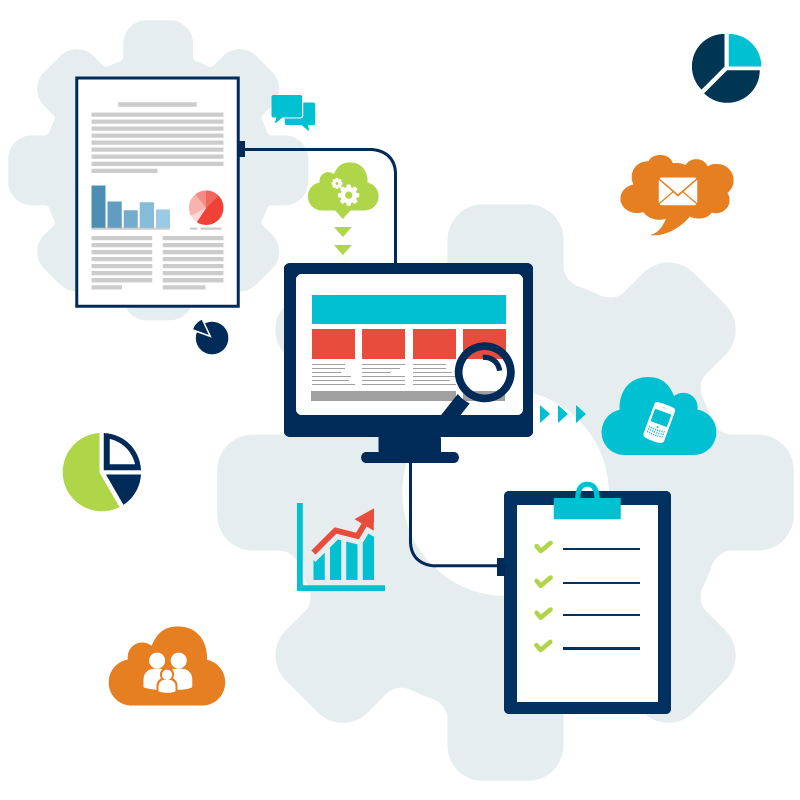Top Web Scraping Tools for Efficient Data Extraction
Understanding Web Scraping
Web scraping is the process of extracting data from websites. It involves retrieving information from web pages and storing it in a structured format for further analysis. By using web scraping tools, you can automate the data extraction process and save valuable time and effort.
Web scraping is commonly used in various industries such as e-commerce, market research, and data analysis. It allows businesses to gather large amounts of data from different sources, including competitor websites, social media platforms, and online directories.
To perform web scraping, you need to understand HTML, the markup language used to structure web pages. Web scraping tools use HTML tags and attributes to locate and extract the desired data. Some tools also support JavaScript rendering, enabling you to scrape dynamic websites that load content dynamically.
Web scraping can be a powerful tool for gathering information and gaining insights. However, it’s important to ensure that you comply with legal and ethical guidelines when scraping websites. Make sure you have permission to access and use the data you extract, and respect the website’s terms of service.
Benefits of Using Web Scraping Tools
Using web scraping tools offers several benefits for efficient data extraction:
1. Time-saving: Web scraping tools automate the data extraction process, allowing you to gather large amounts of data in a short period of time. This saves you from manually visiting multiple websites and copying data.
2. Accuracy: Web scraping tools retrieve data directly from the source, ensuring accuracy and eliminating the risk of human errors that may occur during manual data entry.
3. Scalability: Web scraping tools can handle large volumes of data and are capable of scraping multiple websites simultaneously. This makes them suitable for projects that require extensive data collection.
4. Cost-effective: By automating the data extraction process, web scraping tools reduce the need for manual labor, resulting in cost savings for businesses.
5. Competitive advantage: Web scraping allows businesses to gather competitive intelligence by monitoring competitor websites and extracting information on pricing, product details, and customer reviews.
Overall, web scraping tools provide a more efficient and effective way to extract data, enabling businesses to make data-driven decisions and gain a competitive edge in their industry.
Top Web Scraping Tools in the Market
There are numerous web scraping tools available in the market, each offering different features and capabilities. Here are some of the top web scraping tools:
1. BeautifulSoup: A popular Python library for web scraping. It provides easy navigation and search capabilities to extract data from HTML and XML files.
2. Scrapy: A powerful Python framework for web scraping. It allows you to define the scraping logic and provides built-in support for handling common web scraping tasks.
3. Selenium: A web testing framework that can also be used for web scraping. It supports JavaScript rendering and is useful for scraping dynamic websites.
4. Octoparse: A user-friendly web scraping tool that requires no coding. It provides a visual interface for creating scraping tasks and offers features like data export and scheduling.
5. Puppeteer: A Node.js library for controlling headless Chrome or Chromium browsers. It can be used for web scraping as well as automating browser tasks.
These are just a few examples of the web scraping tools available in the market. Before choosing a tool, consider your specific requirements, such as the complexity of the websites you need to scrape, the programming language you’re comfortable with, and the level of customization you require.
Key Features to Look for in Web Scraping Tools
When selecting a web scraping tool, consider the following key features:
1. Ease of use: Look for a tool that has a user-friendly interface and provides clear documentation or tutorials. This will make it easier for you to get started and use the tool effectively.
2. Flexibility: Choose a tool that supports various data formats, such as HTML, XML, JSON, and CSV. This will allow you to scrape data from different sources and work with it in your preferred format.
3. Customization options: Some web scraping tools offer advanced customization options, such as the ability to specify scraping rules, handle login authentication, and interact with JavaScript-based content. Consider your specific requirements and choose a tool that provides the necessary flexibility.
4. Data extraction capabilities: Look for a tool that provides efficient data extraction methods, such as CSS selectors or XPath expressions. These methods allow you to locate and extract specific elements from web pages.
5. Data management: Consider whether the tool provides features for handling large volumes of data, such as data storage, filtering, and sorting. These features can help you manage and organize the scraped data effectively.
By evaluating these key features, you can choose a web scraping tool that best suits your needs and enables efficient data extraction.
Best Practices for Data Extraction Using Web Scraping Tools
To ensure successful and ethical data extraction using web scraping tools, follow these best practices:
1. Respect website policies: Before scraping a website, review its terms of service and privacy policy. Make sure you comply with any restrictions or guidelines set by the website owner.
2. Limit the frequency of requests: Avoid sending too many requests to a website within a short period of time. This can overload the website’s server and result in your IP address being blocked. Use delay settings or consider using a rotating proxy service to distribute your requests.
3. Use appropriate scraping techniques: Choose the right scraping technique based on the website’s structure and the data you want to extract. CSS selectors and XPath expressions are commonly used for locating and extracting specific elements.
4. Handle dynamic content: If the website uses JavaScript to load content dynamically, use a tool that supports JavaScript rendering, such as Selenium or Puppeteer. This will ensure that you can scrape the fully rendered page.
5. Handle login authentication: If the website requires login credentials to access certain data, make sure your web scraping tool supports handling login authentication. This will allow you to access restricted content and extract the desired data.
6. Monitor website changes: Websites may change their structure or layout over time, which can break your scraping scripts. Regularly monitor the websites you scrape and update your scraping logic accordingly.
By following these best practices, you can ensure that your web scraping activities are legal, ethical, and effective in extracting the desired data.


